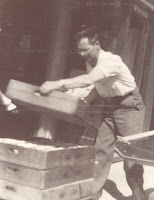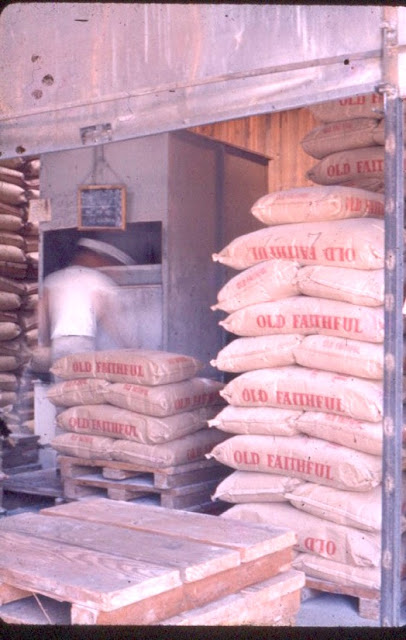My last post was in February of 2021. Now it is almost June of 2023, and I am almost two years older. Now I'm 82 years old. I decided to try to write regularly during the next few years because I see so many people who have no idea of what it's like to be this old. They seem to have no idea that the things they do now affect how their older years will be.
I seem to have learned that early in life. When I was fifteen I stopped struggling to gain more yards on the football field, and it changed my life. When I stopped struggling the gang of about five opposing players were able to stop me and pull me down, slowly. I just kind of gave up the struggle, and slowly I went down. I had been worn down from practice every day, and late night practice and games and working in the morning from 5:30 a.m. til I had to rush to get to school. I was tired and my right hip hurt every day to walk, so I just fell.
When they finally got off me, I stayed on the ground for a while, and got up slowly. My back hurt, down low. I went to the doctor, on Seventh Street, near "F" street, a half a block from the Eureka Theater. He took X-Rays. I heard him talking to someone as I was waiting.
"He can play football, I'm not going to stop that," the doctor said, "but he needs to know about what could happen."
So he told me. "You have a curvature of the spine, and if you have a sudden shock in a way you are not braced for could cause your vertebrae to move in the wrong way and cause paralysis." My parents never said anything, nor talked to me about it.
I listened to him, and told my coaches the next day that I was not going to play football anymore. I handed in my gear and walked out of the field house locker room. Two of the team's coaches tried to talk me out of quitting, and told me about exercises I could do.
"Too much of a risk," I thought.
All my life, if I ran too much, and that's not very much anymore, my right hip hurt and still hurts when I walk after a run, but I'm not paralyzed. A doctor took an x-ray a few years ago and said I have an extra vertebra in my lower back.
I did not smoke, but when I was in the sixth grade my neighbor did go with me into the woods next to my house and we did puff on cigarettes for a few weeks, so much that when I took a deep breath I coughed when I hadn't touched a cigarette in a few days. I stopped that when I felt that tickle in my lungs. It was only a few weeks.
I also never drank alcohol. My eighth grade students didn't believe it when I said I had never drank a full can of beer. Only the last drops in a can my father had already finished. I never drank enough to ever feel the effects of alcohol.
Today, I do have the results of running in the San Joaquin Valley. I do have the Valley Fever spores in my lungs.
My doctor said I would have. "Every runner has them," She said when I went in to see about a persistent ache under my right shoulder blade in January of 2021. "I also need to check you for covid," she added.
 |
| This is Stan Stark on his rowbike, a four wheel moving rowing machine. |
"You did have covid," my doctor said, "You have a post covid marker in your blood." So I did have covid, though I didn't feel the sickness. I had a chest x-ray.
"You have pneumonia," she said this time. She gave me some pills for that, and after a few weeks she said I needed another x-ray, and a test for Valley Fever. By this time I was 81, and Dorothy said I had fallen four times. I just thought I was weak and let myself down onto the floor slowly. I didn't remember actually falling. But she insisted that I couldn't get up by myself. She even had our grand daughter come and help me up some of those times. My son, who came over to fix me breakfast said I could not go up our stairs. I did obey until I felt stronger. I tried to run, and ride my bikes, but it was difficult. I kept thinking, "It's because I'm over 80," but I did have John Ames come over and give me a Priesthood blessing. He later said I looked really bad, but I didn't believe I was that sick.
On December 14, 2021 Dorothy and I were set apart as Temple Workers in the Fresno Temple. We bought a new car, so it would not cost so much driving to Fresno, about 90 miles. In the temple we have to change into white clothing. Changing quickly was difficult. I had to lean against the wall to put my pants on, because my balance had not come back yet.
The doctor called again and said I did have Valley Fever. I needed to take some fungus controlling pills. Once you have the fungus, all you can do is keep up your other health factors and control the fungus. I began to feel stronger, I was over the pneumonia, but the welder at the welding shop said the pills make your muscles weaker. His wife has Valley Fever and takes a much stronger dosage. The welder was right. I couldn't build up my muscles while taking that Valley Fever medicine. But I didn't give up. I kept riding the bikes, and trying to do more. I was through with the Valley Fever medicine in early March of 2023, and I think I am getting stronger.
So here are the take-aways from this episode. Your mind and the rest of the world are your worst enemies when you start getting old. The obituaries of friends and the movies and TV keep saying that you are almost dead when you are 80. It is slower to recover from illness, but the illness is only part of it. Because the illness makes you tired, you think it is your age, so in your mind, your age is your problem. If you allow yourself to think your age is your problem, you don't have to try to build back your muscles. If you give in to that, your age does make you weaker. Muscles only build when you work them, so keep working. Keep trying. Keep struggling. The struggle makes you stronger.


























